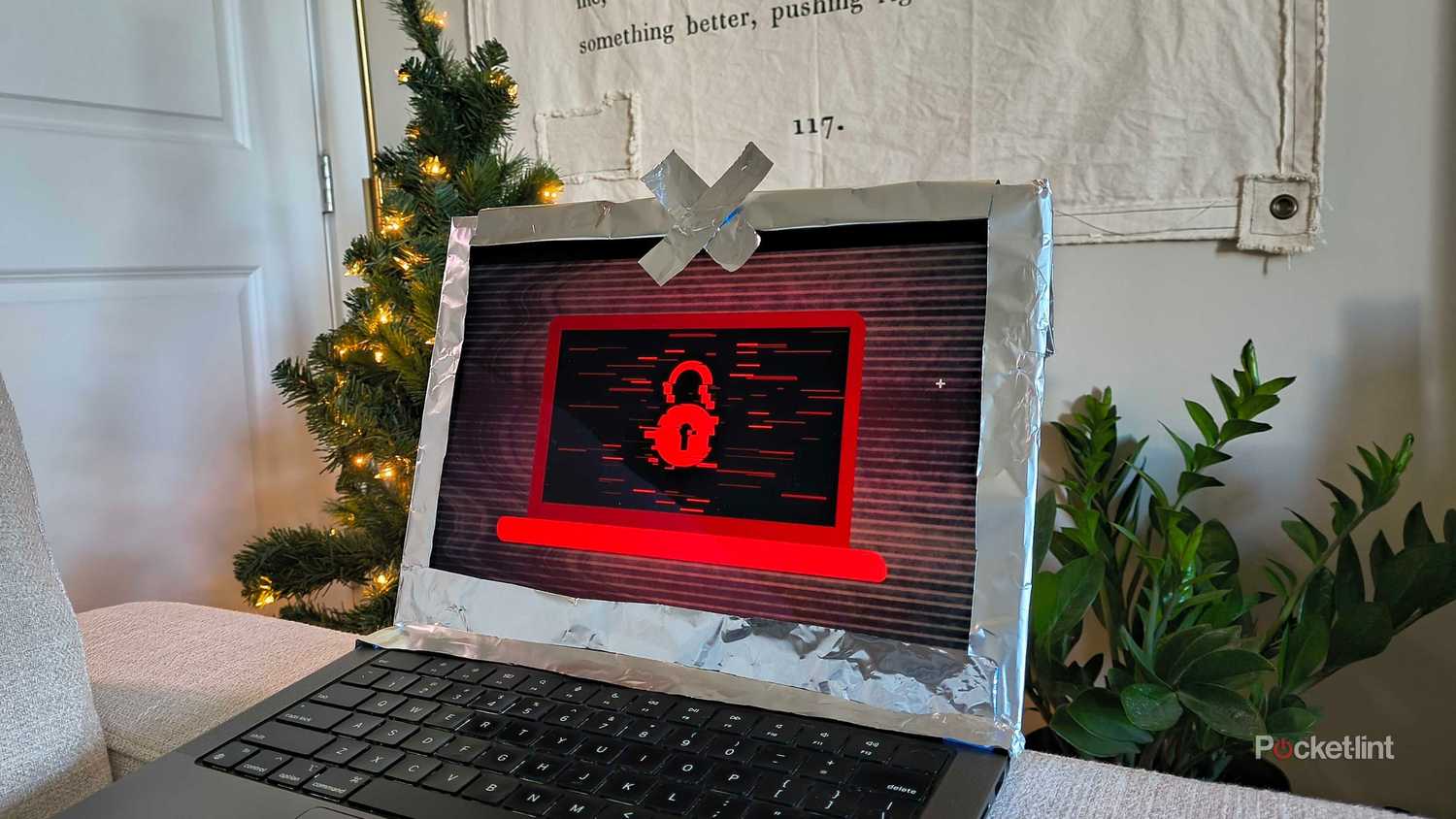You thought the tin foil tizzy was over, eh? If you thought I couldn’t do more aluminum foil experiments, think again.
I’m officially the person with an aluminum-foil-wrapped laptop. It started off as creating a homemade foil webcam cover but turned into a substantial waste of metal sheeting when I went all in on making an aesthetic case, if you could call what I did above either of those things. The truth is, there’s a reason why I covered my MacBook Pro in the crinkly material, and it’s a lot simpler than you’re probably thinking.
In a truly tin-foil-hat manner, I covered my webcam in aluminum foil to keep malicious parties from watching me through the camera. The foil is the joke — the privacy bit is the lecture your parents give you after. Here’s why.
If I were to actually build my own fully functional webcam cover, I would only cover the webcam itself — not the whole outline of the screen as shown in the image above, which was crafted for dramatic effect.
Hello, paranoia?
A legitimate security concern
Implementing an extra layer of security is harmless and doesn’t make you paranoid. In fact, a former FBI Director mentioned that he covered his own webcam with a piece of tape as a personal privacy measure back in 2016 (per NPR) during a speech about encryption and privacy. Sure, in the almost-decade since that remark, software privacy initiatives have only improved — but even preventative measures like anti-malware programs, strong passwords, firewalls, and even biometric passkeys aren’t guaranteed to be watertight software solutions.
Covering your webcam is low-tech. Heck, it’s literally a physical barrier between the camera lens and anything it could capture. But it’s completely unhackable from a software perspective and offers peace of mind that you have manual control over at all times. If someone wanted to see what was going on through your laptop’s camera, the only way they’d be able to do so is to physically be at your computer to take it off — and in that situation, you’ve got much bigger fish to fry.
However, not everyone thinks it’s worth it to cover their laptop cameras, and some manufacturers outright urge you not to. Apple in particular warns its MacBook users to avoid using physical webcam covers for the risk it poses to damaging the display. However, even at the end of its warning, it acknowledges the fact that sometimes, you still might want to (or have to, in a professional setting) use a webcam cover and suggests a cover that isn’t thicker than an average piece of printer paper, doesn’t leave a sticky residue, or is removable prior to closing the lid.
Some computers, like MacBooks, feature a little green light next to the webcam that indicates whether the camera is in use. The concern here lies with the issue that if your system has already been invaded, the malicious party can surely also turn off that light while it spies on your webcam.
Hacking a webcam is a more advanced and intricate software attack, and not nearly as common as simpler scams like phishing or smishing. Unless you think you’re a specific target for this kind of attack (because of your occupation, financial status, or other sensitive situation), it’s unlikely you’ll fall victim to a crime of opportunity this way. However, the peace of mind that comes from such analog protection is invaluable for many folks, regardless of their value to hackers.
Because of my extensive experience as Pocket-lint’s resident Tin Foil Tech Editor, I reached for the roll of aluminum in my kitchen drawer. Because cheap Amazon versions aren’t nearly satirical enough for my tastes, of course.
How to build your own aluminum foil webcam cover
Terribly crude, intensely inefficient, and unfortunately effective (please don’t do this)
Purely for my own crafty enjoyment and your curiosity, here’s how I made my own webcam cover out of aluminum foil:
- Get your laptop, painter’s tape, and roll of aluminum foil ready. Here we go.
- Cut two two-inch strips of aluminum foil, about 3/4 of an inch wide (I didn’t measure and neither should you).
- Roll up a piece of painter’s tape, put it in the middle of one strip, and then fasten the other on top of it.
- Add yet another piece of rolled up painter’s tape to the middle of the X. Still with me?
- Stick the X to your webcam — hey, who turned off the lights?
- Take it off whenever you close your laptop, or you’re finished pretending this is something you’ll actually use.
For the record and the readers, this is a joke and can actually scratch your camera or display. Please just invest in a webcam cover that’s compatible with your laptop, or just go with a classic piece of painter’s tape to cover the lens.
The pros: no hackers can see into your webcam! The cons? Literally everything about it — especially when that one first piece of painter’s tape could’ve done the job and is much less likely to do any kind of damage to your camera or display. In case you haven’t realized it yet, please don’t actually do this.
Does covering your webcam with aluminum foil work?
Define ‘work’ — but yes
If you followed the instructions above (I seriously don’t know why you would), congratulations — you’ve just created the world’s second most ineffective webcam cover (mine still holds first place). If you open up an app that uses your laptop’s camera and see nothing but blackness, you were indeed successful in terms of covering it. So why on earth would someone do this with aluminum foil?
They wouldn’t, actually. Not when there’s a myriad of more practical materials out there like, say, those $7 webcam sliders on Amazon. In fact, I’d say a piece of painter’s tape or a Sticky Note would do a much better job. All that matters is that something opaque is in front of the camera lens — only that equals the visual privacy precaution.
The point isn’t that the webcam cover is made from aluminum foil. It’s that most of us want to cover our cameras for the sake of truly unhackable privacy. Aluminum foil is just a hilarious symbol of early conspiracy theorists, hence why I once gave my Wi-Fi router its own tin foil hat. However, symbolism aside, there is physics that back up the thin metal sheeting’s radio-frequency-blocking reputation.
Why I keep messing around with tin foil tech
A little symbolism, a little science
The idea of wearing ‘tin foil hats’ references a pop-science myth that goes back almost over a century. While today it’s associated with conspiracy theorists, it actually surfaced in early works of science fiction — in which people wore metal hats to shield their brains from mind-control technology. As the decades went by, and various movements fearing government mind control picked up steam, the phrase had slowly morphed into something that encompassed a group of people afraid of invisible technology.
Funny enough, the sci-fi was onto something. While mind-control experiments aren’t at the top of the laundry list of things to worry about, aluminum foil really is actually a highly reflective material for radio waves. So, the idea that one could use it to manipulate signal direction really is grounded in physics — something that Dartmouth actually proved back in 2017.
But is aluminum foil a reliable way to redirect your Wi-Fi, or even phone signal? No, not if my DIY experiments prove anything. It’s much better to invest in your foundational routers, signal boosters, and other official amplification tech over what you find in your kitchen drawer. The same goes for the webcam cover — please just get a cheap plastic one, but make sure it’s safe for your particular display.
Off comes the tin foil hat, today.












